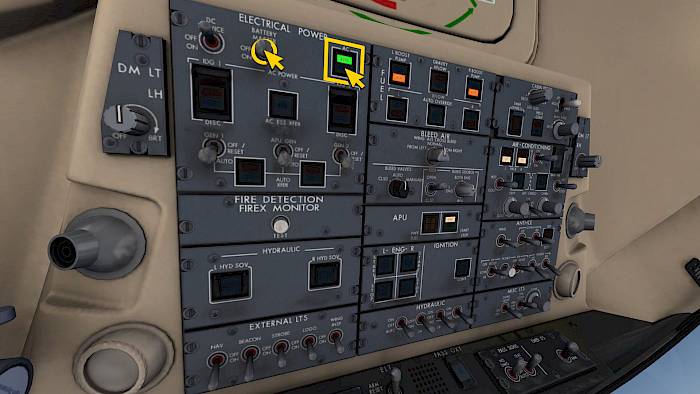
Power On
Turn on the battery and select external power if available
- Battery Master ON
- AC Electrical Power ON
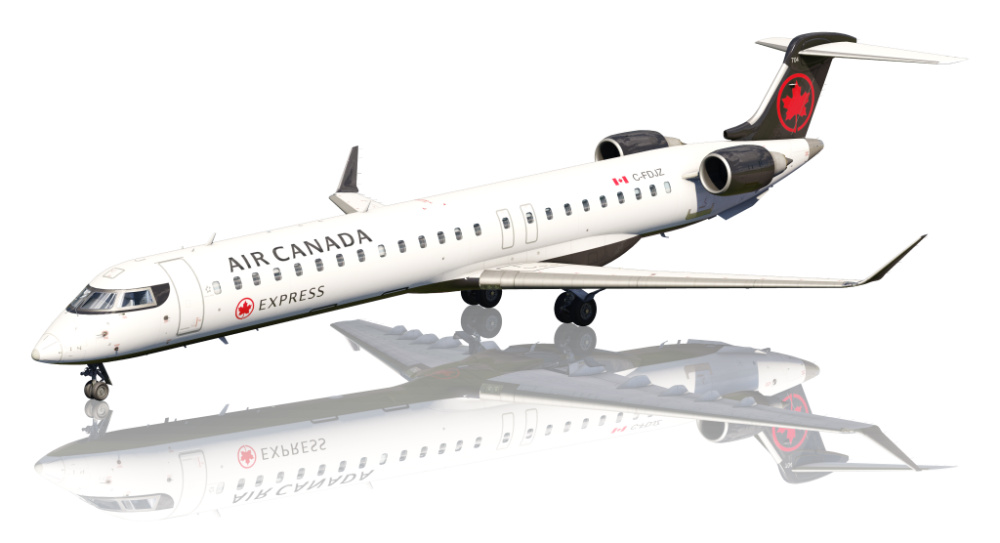
Der Canadair Regional Jet 900, besser bekannt als CRJ900, bietet eine “cold-and-dark” Simulation im Aerofly FS.
Der Begriff “Cold-And-Dark” beschreibt einen Zustand eines Flugzeugs, das längere Zeit geparkt war und nun für den ersten Flug des Tages vorbereitet wird. Die Triebwerke sind aus und alle Systeme abgeschaltet.
Um den “Cold-And-Dark” auszuwählen wähle zunächst das Flugzeug aus dem Flugzeugmenü aus und wähle dann auf der Flugplatzkarte eine Parkposition an. Dann siehst Du rechts Optionen für “Bereit zum Rollen”, “Vor dem Start” und “Cold-And-Dark”. Wähle letztere aus, damit alle System und Triebwerke zu Beginn abgeschaltet sind.
Wir überspringen einige Prozesse in diesem Tutorial und es sollte nicht für die reale Fliegerei genutzt werden.

Turn on the battery and select external power if available

Let’s start the Auxiliary Power Unit (APU) which can provide power on the ground while the engines are not running. We will need compressed bleed air from the APU to start the engines later on.


On the passenger signs panel (PASS SIGNS)
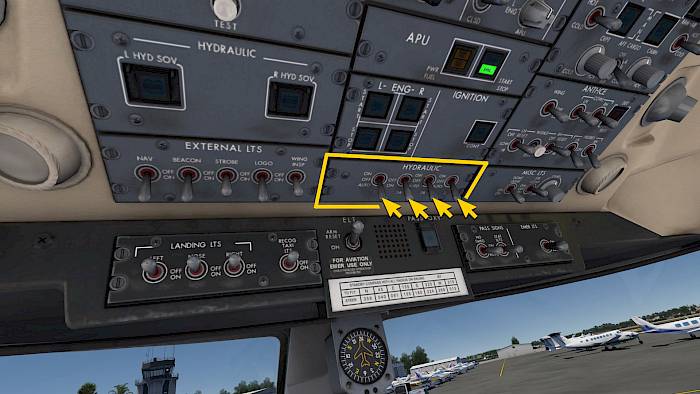
After verifying ground equipment and personell is clear we can power up the hydraulics.
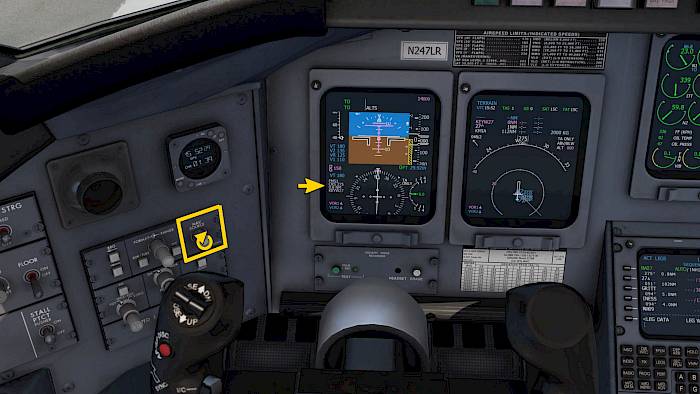
For our departure we want to follow the planned flight plan route. For this we need to select the FMS as navigation source for the autopilot.

Let’s prepare our autopilot for departure. We’ll select runway heading/course, initial altitude and speed.
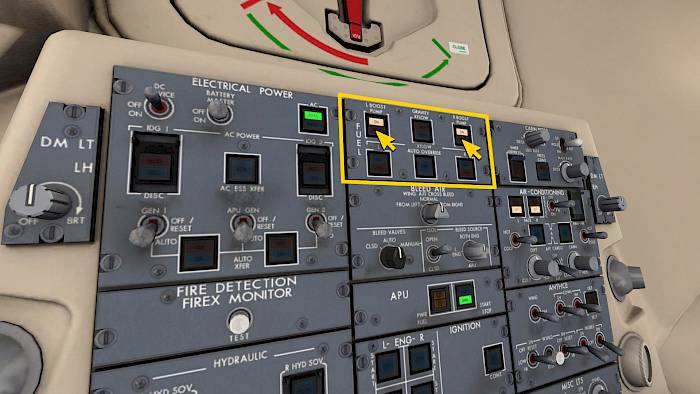
For the engine start we need the APU running to provide pressurized bleed air as well as the fuel boost pumps.

Let’s start the left engine first.
The engine controller now turns on the ignitors and introduces fuel and starts the engine fully automatically for us. Monitor the interstage turbine temperature (ITT) for a hot start and N2 for a hung start.
Once the engine has stabilized at N2 around 60% we can start the second engine in the same way with the R ENG START button.

Now that the engines are started we no longer need the APU.
Let’s turn on the Pneumatic Air Conditioning Kits (PACKs) to cool the cabin.
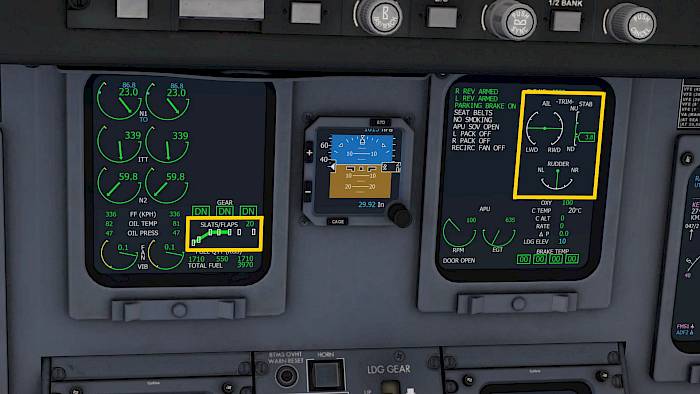
Depending on the takeoff runway length we can use either flaps 8 or flaps 20 for takeoff. On a long runway you can use flap 8 for a better climb performance. In our case the runway is short and we’re using flaps 20 for takeoff.

In the pedestal, aft of the thrust levers there are several gray push buttons to change the displayed system synoptic on the right hand EICAS screen.

Turn on the necessary external lights.

For redundancy reasons we’re turning on the cross flow override and the continuous ignition.
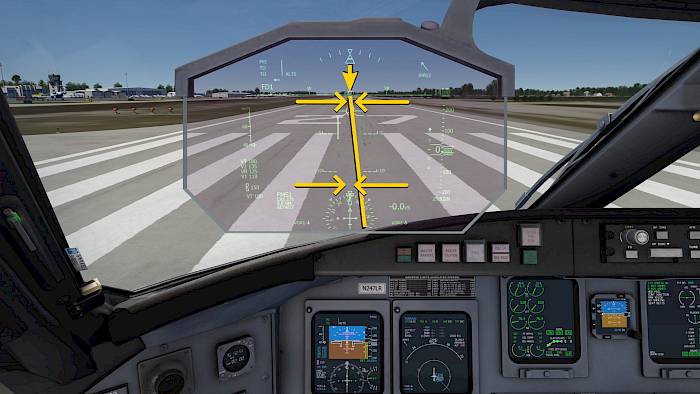
The left EICAS screen Crew Alerting System (CAS) area should now be blank and on the right hand EICAS screen you should see a green T/O CONFIG OK, L REV ARMED and R REV ARMED text as well as a couple white memo texts.
The T/O CONFIG OK message which indicates that the aircraft is in takeoff configuration and ready for departure.

We’re now cleared for takeoff.
Above the TO/GA detent there is a position for the Automatic Power Reserve (APR) mode which is only used in emergencies. Be careful not to set APR when using your mouse or VR hand controllers.
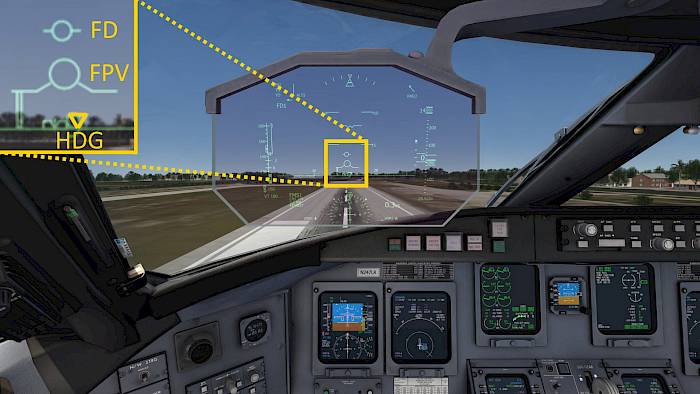
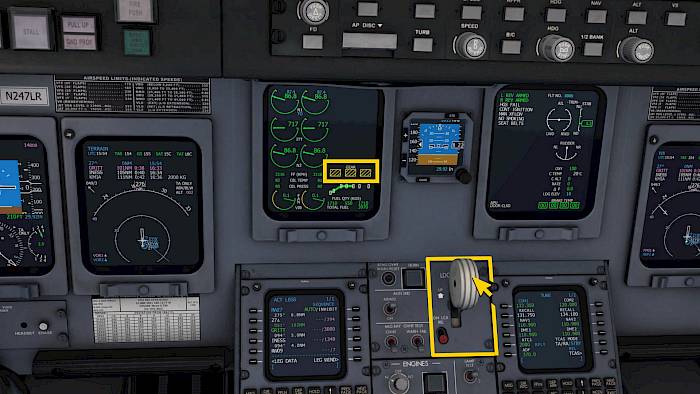
When you have lifted off and the vertical speed indicator shows a positive rate of climb you can retract the landing gear.
Monitor the gear retraction on your left EICAS screen. When you see three white UP indications the gear is retracted.

Above 400ft we can turn on the autopilot.
When you are satisfied with the flight director guidance
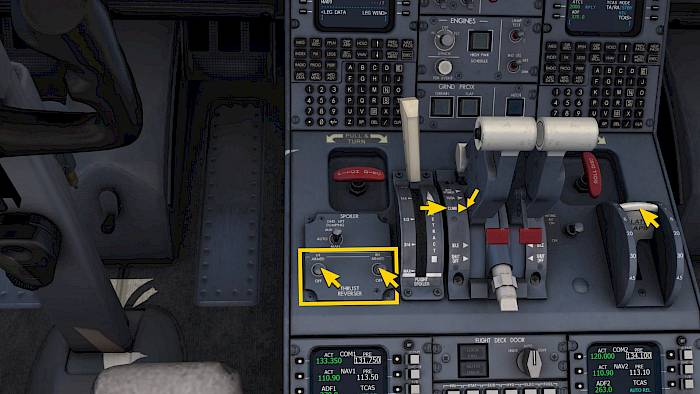
After passing about 180KT we can retract the flaps
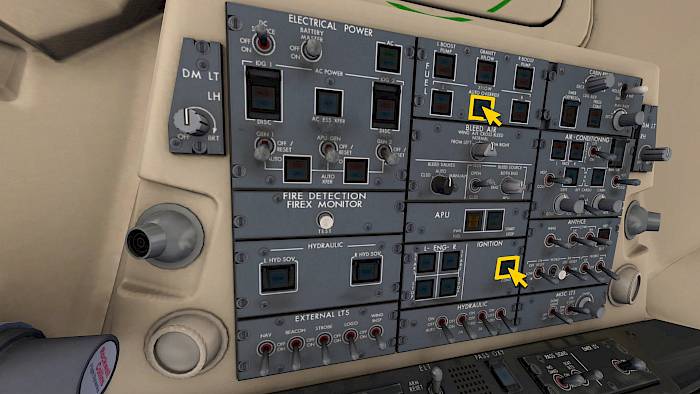
After takeoff we no longer need the continuous ignition and fuel cross flow.
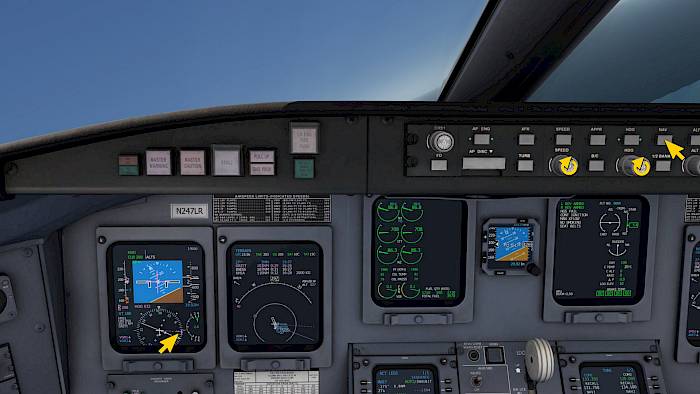
We want to follow the planned navigation route now. For this we selected the navigation source FMS1.
Once we intercept the route the aircraft will pick up the route and follows it laterally (LNAV).
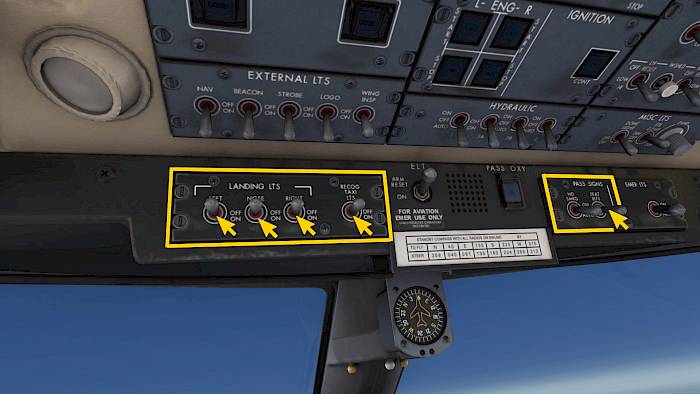
After passing 10,000ft
Once the autopilot captures our selected cruise altitude we need to reduce thrust to not overspeed. There is no auto throttle in this aircraft, so we manually have to manage airspeed.

We can skip ahead in flight with the Aerofly FS time-skip feature if you want to.
When we see the Top Of Descent (TOD) on our navigation map we can start preparing the descent. When we are about 1 minute out from the TOD a vertical profile appears on our PFD and a white snowflake symbol indicates the planned vertical profile of the route.
The CRJ900 cannot fly the VNAV profile by itself. We have to manually adjust the rate of descent and engine thrust to stay on profile.
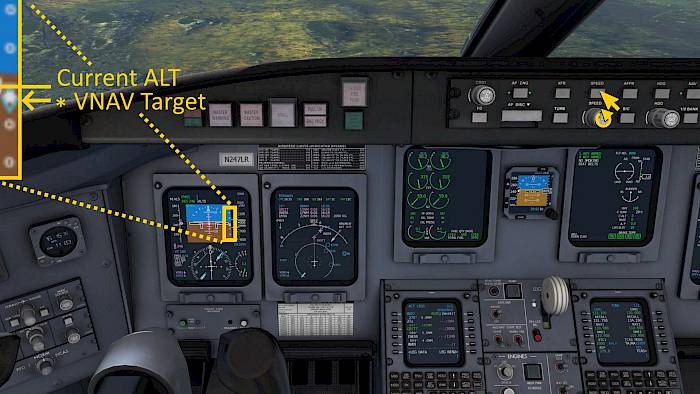
Descent with SPD mode:
Descent with V/S mode:
Passing 10,000ft
We programmed an ILS approach into the FMS or used the Aerofly FS navigation menu to select an ILS approach which we now want to fly. The aircraft can then automatically tune the ILS frequency and course for us.
The active navigation source is still FMS1 during the descent but now a blue LOC1 appears as preselected navigation source. When we arm the approach and the capture conditions are met the aircraft automatically activates the LOC1 source.
You can also manually tune a frequency, set a course, switch the navigation source to LOC1 if you don’t have a flight plan programmed. This is needed if we make quick last minute changes for example.

When you see the FMS source but no blue LOC source within 15NM:
When you are within 15NM and see a valid localizer signal on the HSI
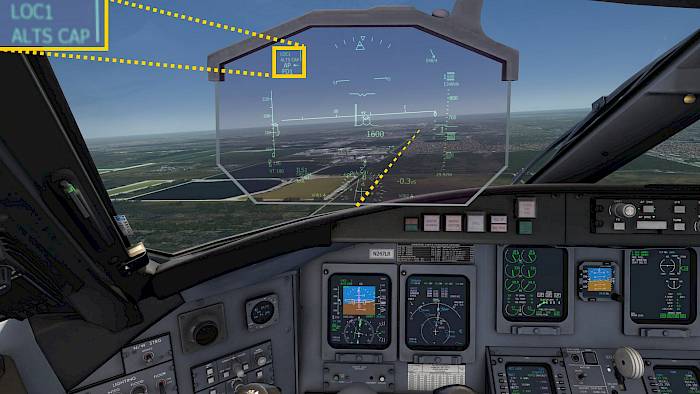
The aircraft now automatically performs the NAV-to-NAV transfer if it was armed and activates the ILS navigation source and captures the localizer for us.
After the autopilot captured the LOC signal it can start to capture the glide slope (G/S) as well. We need to monitor our energy with manual thrust inputs and speedbrake to not be too high and too fast when this happens.

Monitor the glide slope deflection. When the glide slope is one dot above center:
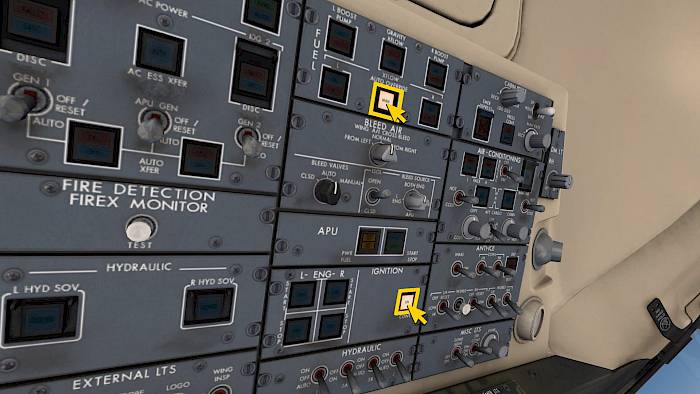

Time to get to work.
Landing the CRJ900 isn’t much different to other aircraft but depending on speed the height of the cockpit above the runway changes significantly because of the long nose.
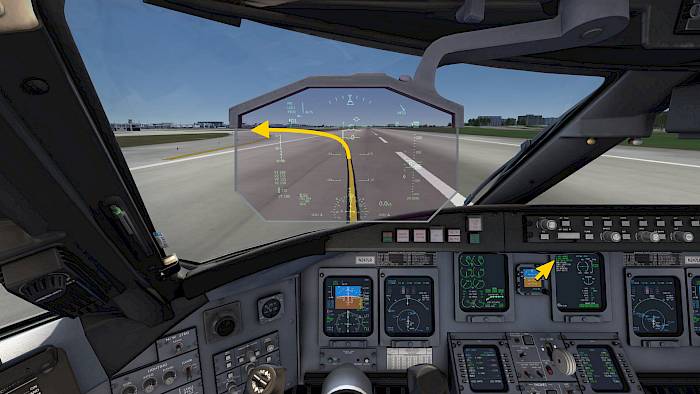
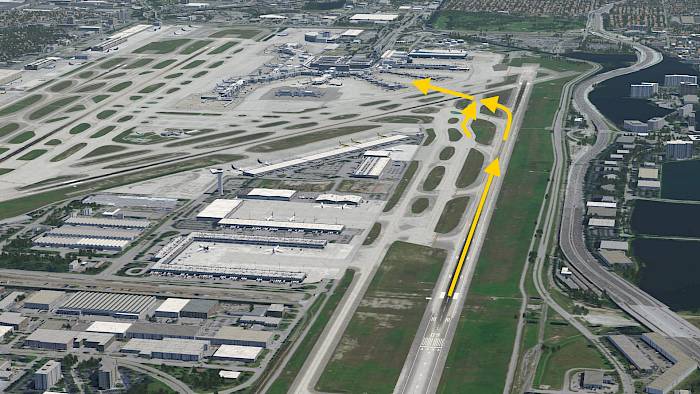
We’ve arrived at Miami in our example flight and vacated the runway with one of the highspeed taxiways. We can now taxi to our parking position at the terminal.
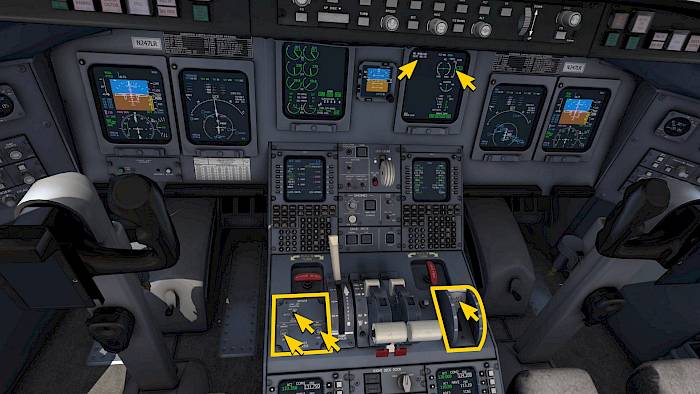
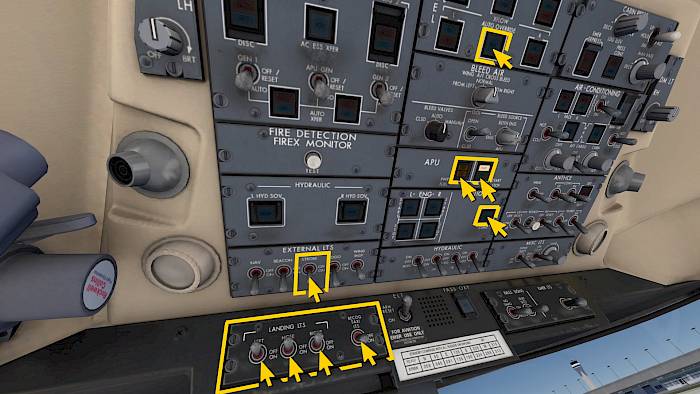
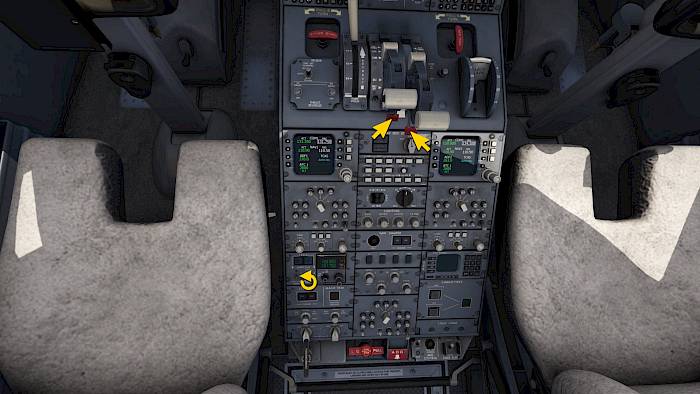
When we have arrived on stand we can turn off the engines.
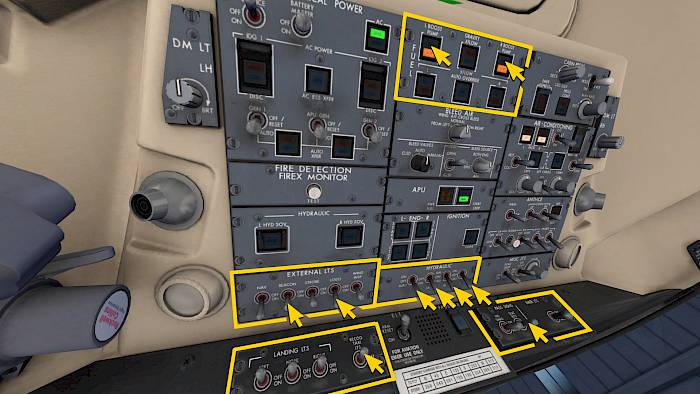
Once the engines have spooled down we can turn off the beacon light and release the passengers.